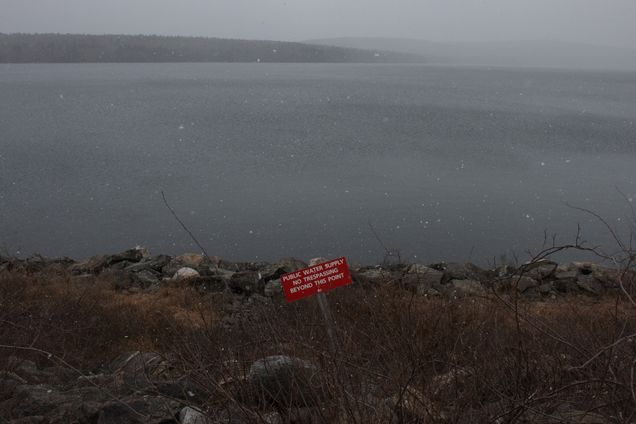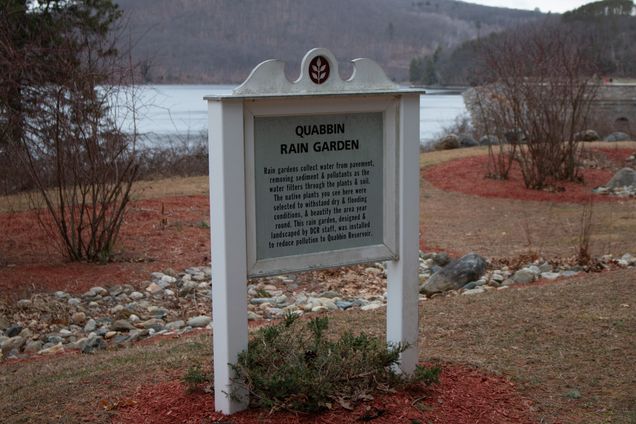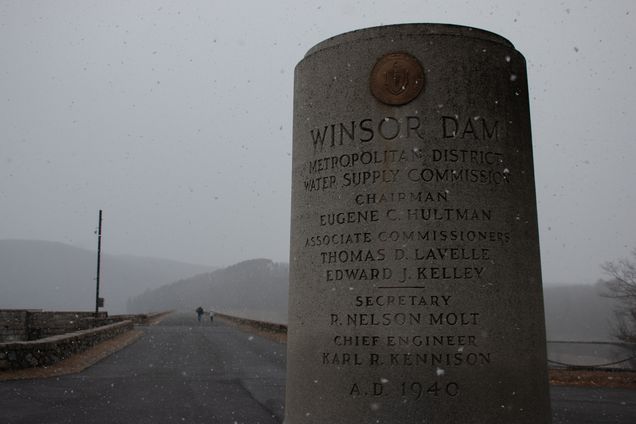State Prepares Water Systems for Climate Change

State Prepares Water Systems for Climate Change
by Caitlin Faulds
One of the cleanest urban water supplies in the nation might be under threat due to climate
change, according to state water officials.
More than three million people in the Boston area depend on the health of forests 65 miles away
to help filter their drinking water, according to the Massachusetts Water Resource Authority. But
as New England warms, changes to forest health and storm intensity could impact water quality.
“We’ve thought a lot about climate change over the years – how it affects the land, how it affects
the water and what it means in terms of how the system will operate,” says Stephen Estes-
Smargiassi, Director of Planning and Sustainability at MWRA.
Boston water starts as rain or snow in the hills around the “very well protected” Quabbin and
Wachusett Reservoirs, Estes-Smargiassi says. Because the surrounding watershed area is
clear of any pollutants, he says water enters the reservoirs “crystal clear” with low levels of
algae-producing nutrients. The water is effectively filtered by the forest floor.
“All of this makes them safe to start with as source water and relatively easy to treat,” he says.
The forests do this job of biofiltration so well that the Boston water system is one of the few in
the country that doesn’t rely on chemical filtration to meet state and federal standards, Estes-
Smargiassi says.
“Most of what goes into having clean water at the tap is occurring out in the watershed using
Mother Nature as our helper,” he says.

But as Mother Nature heats up, New England is already seeing more frequent and intense
storms, according to Maria Janowiak of the Northern Institute of Applied Climate Science. While
this might actually increase the amount of water in the area, she says it can be bad for water
quality.
“In the forest, it can cause a lot of what’s called overland flow because the ground can’t soak up
all the water,” Janowiak says.
Instead, the water heads down fast and unfiltered, straight into the reservoirs, she says. This
means that there is less time for the pollutants to filter out.
This unexpected overland flow can also cause erosion and lead to road and culvert washouts,
entering more sediments and contaminants into the system, according to Janowiak.
“There are hazards to water quality that people are definitely looking at,” Janowiak says.
MWRA is already limiting runoff and erosion from roads and subdivisions and making
preparations for stronger storms in the future, Estes-Smargiassi says. They’ve limited
development around the Quabbin, conserving 85% of the land around the reservoir with help
from the Massachusetts Department of Conservation and Recreation.
“By maintaining it in its pristine, undeveloped state, it allows it to be much more resilient to
climate change,” Estes-Smargiassi says.
Promoting a diverse, adaptable forest with a variety of tree and plant species is also essential,
he says. Healthy forests can absorb more water, he says, potentially adjusting for heavier
rainstorms.
“You want to have some older trees and some younger trees,” he says. “You want a mixture so
that the forest is resilient.”
MWRA also monitors the reservoirs themselves to ensure water quality.
“One of the things that we do pay attention to is birds,” he says. They run a “gull harassment
program” – in which no birds harmed, just disrupted by a boat and encouraged to leave for the
night – to prevent bird droppings from dirtying the clean water.
They also track invasive species, algae types, plants and bugs in the area, according to Estes-
Smargiassi, and they use buoys help to monitor all aspects of watershed health.
“What you need to do is to stay on top of it, develop that long term record of data so that you
can see where things are changing and understand what implications it may have,” Estes-
Smargiassi says.
Going forward, Estes-Smargiassi says he expects to see some changes to Massachusetts’
water systems, but he feels MWRA is prepared.
“Not saying we’re ignoring it, but the alarm bells are not going off at this point,” he says.

But there are a few ways that Boston residents can help keep their water safe, he says. Estes-
Smargiassi encourages people to pay attention to the taste and smell of their tap water and alert
MWRA if any changes are noticed. He also advises residents to conserve water wherever
possible and prioritize environmental policies in politics.
But one of the most important things, he says, is to visit the Quabbin to see where Boston water
starts its journey.
“The things we do in our daily life,” he says, “are connected to that larger environmental issue.”